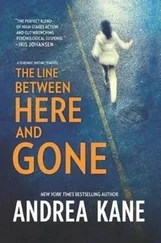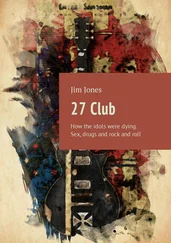The further along I got with my solo winter fourteener project, the larger this private world grew, and the more it intertwined with my sense of self. Climbing fourteeners in the winter by myself wasn’t just something I did; it became who I was. I didn’t hold any delusions about the difficulty of the project relative to world-class climbing routes, or compare myself with elite alpinists, but each time I scaled another high peak, I explored and developed another part of me.
I left my first swooping backcountry ski tracks on Mount Harvard’s lower south face with my telemark skis, the only traces of human passage that peak would see for six months. I saw three wolves run a half mile in three feet of powder across a wide-open meadow at 11,000 feet on the west side of Mount Massive-even more impressive than their power and grace was the fact that prior to that day in March 2002, wolves had been extinct in Colorado for over six decades. I stared into storms and met their fury with intensity and jubilation, growing icicles on my face on Humboldt Peak and spreading my arms like wings in the wind on the summit of Torreys Peak. I basked in the sun spray of a perfectly calm and unnaturally warm noon atop Mount Yale and froze in my maximum-thickness down parka on Mount Sneffels.
As my passion and dedication to the outdoors deepened, my time in the mountains left me with a singular desire to move back to Colorado and pursue my development from a home in the high country. I was altogether burned out on working in a large corporation. Then, in the spring of 2002, the opportunity came up for me to climb Denali with a group of über-athletes. But without the required vacation time to go on the trip, I had to make a choice between following my bliss and keeping my job at Intel. In the end, it didn’t even feel like a sacrifice to quit my job, sell most of my household goods, and pack my outdoor toys into my three-year-old Toyota Tacoma pickup truck (complete with rubber-tramping topper for camping). On my last day of work, Thursday, May 23, 2002, I wrote an e-mail to all my friends, announcing my new start, quoting Goethe: “Whatever you can do, or dream you can, begin it. Boldness has genius, power, and magic in it.”
Most of my colleagues encouraged me in my transition, but there were a few who could scarcely believe what I was telling them-that I was quitting, didn’t have another job lined up, and wasn’t going back to school. It just wasn’t something that Intel engineers did. But at twenty-six, after a modest career of five years, I officially retired. “Holding a corporate job” joined “living east of the Rocky Mountains” on a two-item list of things I vowed never to do again in my life. Thus began a journey that would take me to the summit of Denali, the highest mountain in North America, through thirty-eight states and Canada in six months, and end in a little place called Aspen, Colorado, elevation 7,890 feet.
Desert dawn
Rise up early, lift your song
On the breath of life that rises from the
Glowing stone
Feel the rock of ages, smooth against your skin
Smell the breath of flowers dancing on the wind Dancing on the wind.
– STRING CHEESE INCIDENT,
with lyricist Christina Callicott, “Desert Dawn”
AS THE MORNING HEATS UP, I no longer have to unproductively hammer my knife into the rock just to stay warm. My aching grip cries out for a change of routine, so I leave the hacking and chipping for another time. Even without sleep, I feel an increased energy from the ambient light in the canyon. It boosts me in the same way that dawn has done when I’ve hiked through the night. Today, though, there is no end in sight. This isn’t a climb with a final pitch or an endurance hike that will be over after a set length of time. My struggle against the boulder is open-ended. I will be here until I solve this problem or I die.
From desert survival stories I’ve read, I know dehydration can kill you by slightly variable mechanisms, but fundamentally, they all entail your organs not receiving adequate nutrients to the point that they shut down. Some people expire once their kidneys fail and their body’s own toxicity kills them; other people last until their heart collapses. Under exertion in hot environments, dehydration can lead to overheating, and you effectively cook your brain. Whatever way death might come to me, convulsions and severe cramping will most likely herald it. I start to speculate…
I wonder what kidney failure will feel like? Not good, probably. Maybe like when you eat so much you get cramps in your back. Only worse, I bet. It’s gonna be a rough way to die. Hypothermia would be better, if it’s fast onset. At least then I could slip off in mind numbness and not feel it. The temperature didn’t dip that low last night, though, only about 55 degrees. Not cold enough for severe hypothermia. Maybe death by a flash flood would be better? Not so much. Is it better to go out with a scream cut off by a wall of muddy water, to fade silently into a cold-induced coma, or to have the final experience of the gasping spasms of heart failure? I don’t know…
But I’m ready for action, not for dying. It is time to get a better anchor established, one that I can use to rig a lifting system and try to move the boulder. If I can rotate the front of the chockstone up, maybe as much as a foot, I can pull out my hand, though that’s a long way to move a rock this size. Maybe I can budge the boulder backward enough to ease its grip and create a two-inch gap-that’s all I need to get the thicker pad of my thumb out of its trap. I know it’s going to hurt worse than the accident itself, because it will be slow and self-inflicted. The hand is done for; I’ve already written it off. But what happens when blood starts circulating in it again? Will it carry the decay back into my bloodstream and poison my heart? Medically, I’m uninformed about the potential threat involved, but spreading toxins seems like a logical result if I’m able to suddenly free my hand. It’s a risk I accept, and one I can only hope to face.
My first move in attempting to create a second anchor is to unclip my stowed fluorescent yellow webbing from its carabiner on the back of my harness and unwrap the tidy chain of storage loops. I untie the knot holding the two ends together and string the twenty-five-foot length back and forth across the top of the chockstone, trying to keep it stacked neatly apart from the ropes of my current harness support system. Facing upcanyon from my manacling point, I guess at the contours and edges that may or may not exist on top of the chockstones that form the shelf above and in front of me. I wasn’t paying close enough attention to their shape when I was up there yesterday afternoon. It appears to me that a shallow triangular horn sticks out in the middle of the shelf nearly six feet over my head. Perhaps if there is a substantial enough in-cut feature on the back of the horn, a strand of webbing could catch and drape over each side of the horn without pulling over the top of it.
My attempts to toss the webbing up over the horn founder; the material doesn’t have sufficient heft for me to throw it in the air accurately. When I can get it high enough, the yellow fabric pulls itself off the horn, almost bouncing off the rock like it’s somehow become spring-loaded. I puzzle over a solution and decide to tie the currently unused end of my climbing rope to one end of the webbing and try throwing the rope over the horn, then drawing the webbing over the horn with the heavier leader. The next dozen attempts-each a prolonged and tedious effort of recovering and reorganizing the rope and webbing, and getting my body back into position so I can try again-all fail as well. I can get the rope over the horn, but as the knot slides over the top, it loses precious centimeters. Subsequently, the webbing is too far forward on the point of the shelf to securely catch on the smooth sandstone. Time after time, the webbing pulls free and falls to the sand on the other side of my chockstone.
Читать дальше












